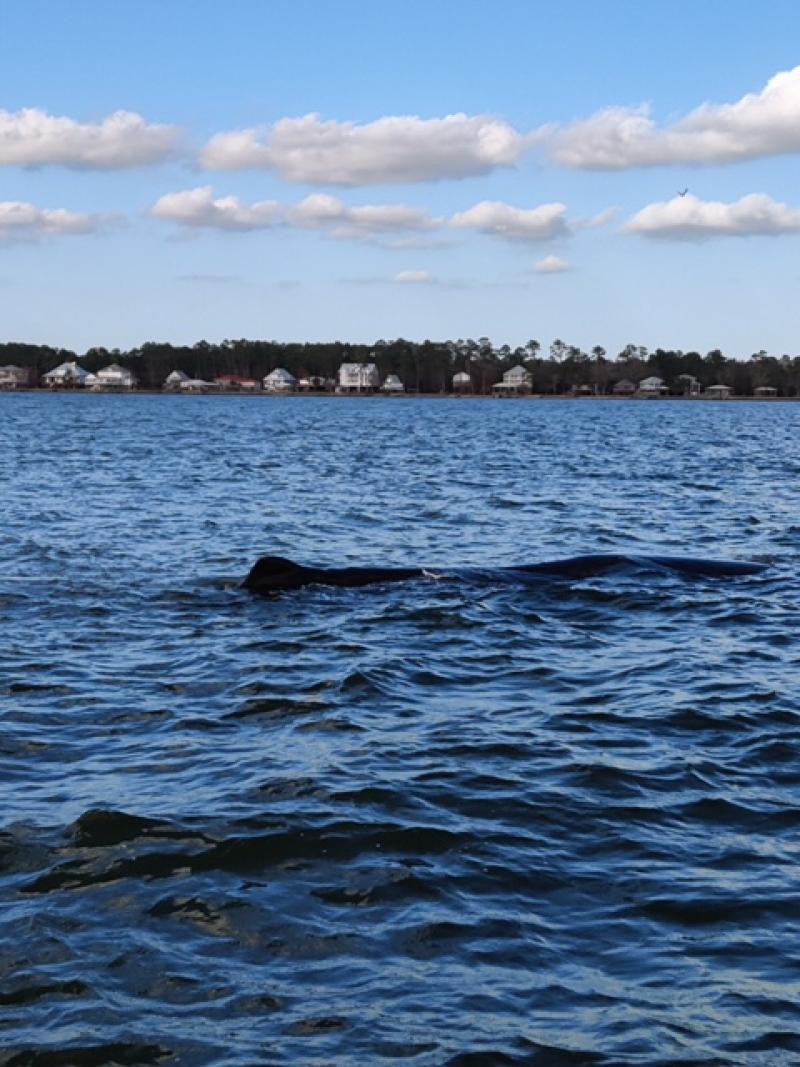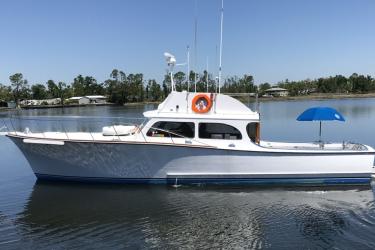November 24, 2020
Today biologists were able to safely and humanely euthanize the sick sperm whale. We appreciate the public and their concern and understanding as the response team continued to search for the whale and safely do their work.
According to biologists, euthanasia was the best option for this animal who was suffering and unable to swim and survive any longer in the wild.
Now biologists will perform a necropsy (non-human autopsy) to try and determine what was wrong with the whale.
If you see a sick or injured please call 1-877-WHALE HELP (1-877-942-5343), take pictures from a safe distance and please do not attempt ti intervene. Animals stand for a reason. Pushing a sick/injured animal back into the ocean only delays the necessary attention and treatment it may need to survive.
Please visit our partner Dauphin Island Sea Lab for more on why/how we decide euthanasia is the best course of action.
November 23, 2020
Biologists with our stranding network partners at the Dauphin Island Sea Lab and Alabama Department of Conservation and Natural Resources were informed of a stranded sperm whale. It was first seen in Mobile Bay on Thursday, November 19. The animal is emaciated and barely breathing. It is moving each day but not vigorously swimming, seeming to move with the currents and tides.
There are no medical treatment options for a whale this large that would improve its likelihood of survival. Therefore, expert teams are attempting to find the animal each morning, monitor its movements, and keep the public and boats away to minimize its stress. If safe and logistically feasible, they will administer sedation to humanely euthanize the whale and reduce its suffering if it strands again.
Tides, daylight hours, weather, and human safety are all factors that have made response to this whale particularly challenging. Large whales that strand are usually very sick, and their condition rapidly worsens during the stranding event. Gravity harms their internal organs, as their large bodies are adapted to being supported in water.
We are in daily contact with our stranding network partners. Teams are trying to locate the whale by boat and conducting aerial survey flights.
We ask the public to please call us at (877) WHALE-HELP (877-942-5343) if you see the whale. Give the response team space to do their work. Understand biologists are mobilizing as quickly as they can to get to the whale and intervene without risking human safety.
Sperm whales are the largest of the toothed whales and have one of the widest global distributions of any marine mammal species. They are found in all deep oceans, from the equator to the edge of the pack ice in the Arctic and Antarctic. The deep offshore waters of the Gulf of Mexico are part of their natural habitat. They are rarely seen in shallow coastal waters unless they are stranded or otherwise in distress. In addition to being protected under the Marine Mammal Protection Act, sperm whales are listed as “endangered” under the Endangered Species Act.
For daily updates and more information on the questions and concerns you have shared with NOAA Fisheries, please visit our partner Dauphin Island Sea Lab. They provide more information about:
- How this type of effort works
- Why we can’t simply take or push an animal back out to sea
- Why and how we consider and use euthanasia


